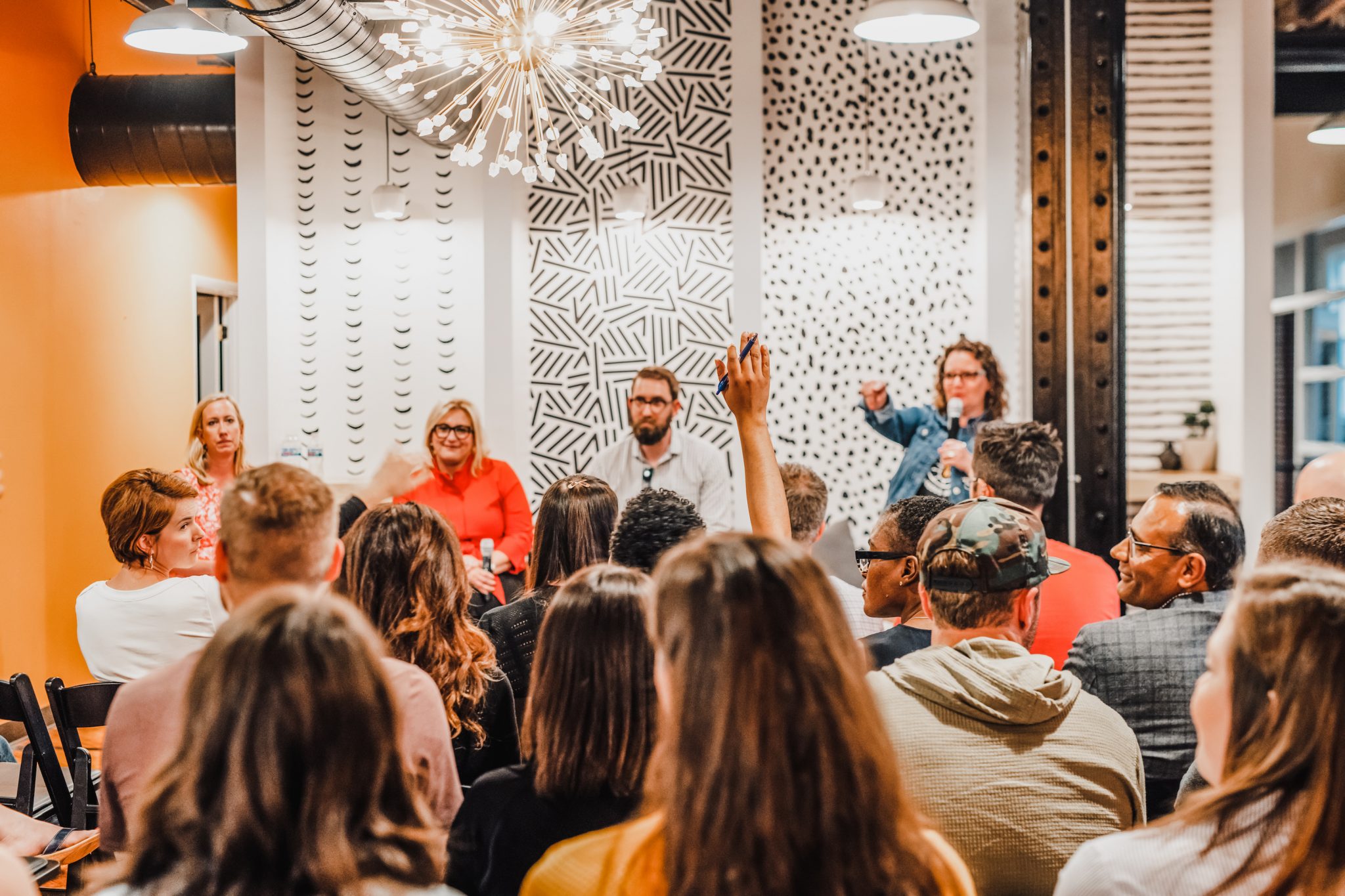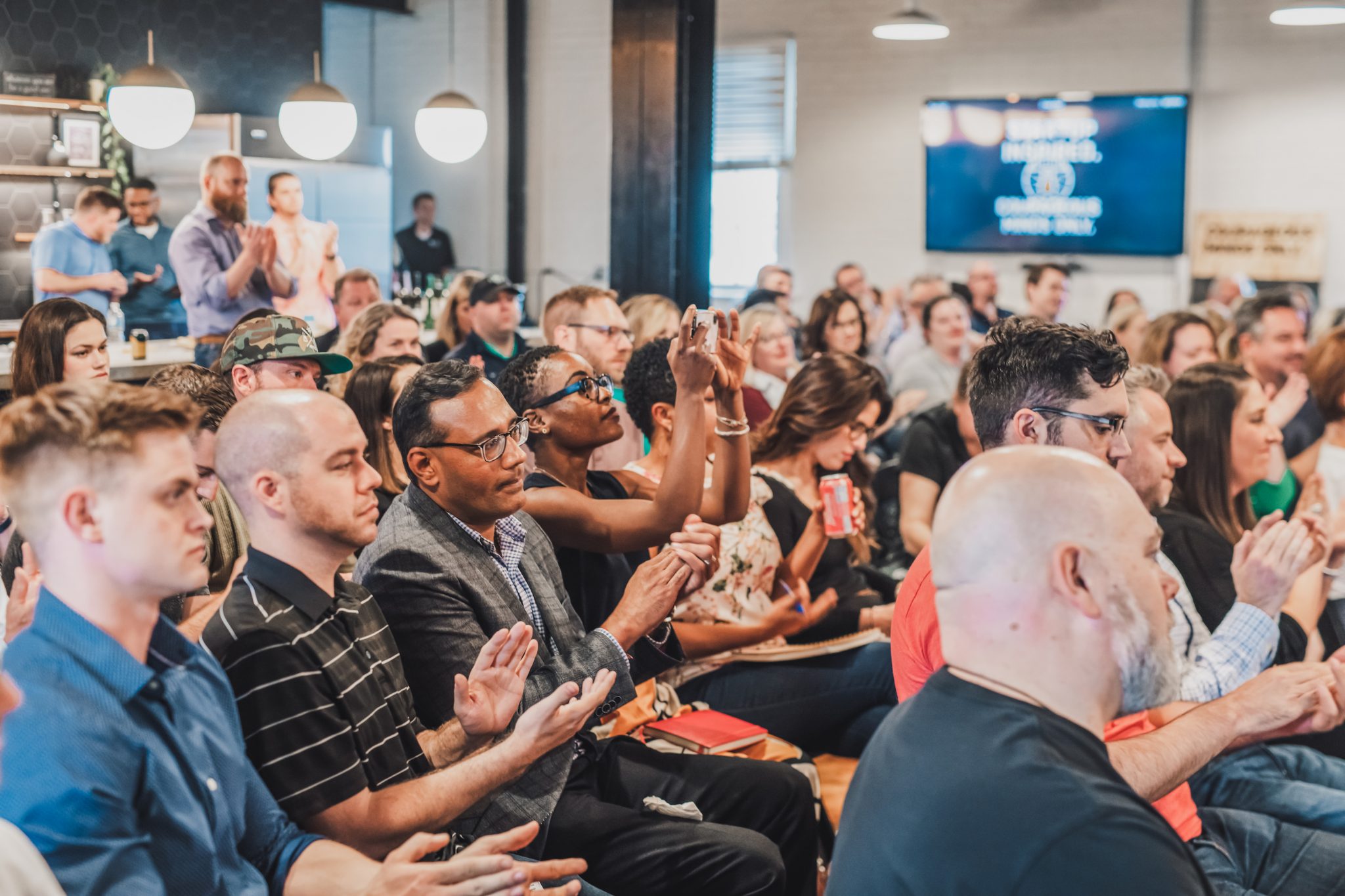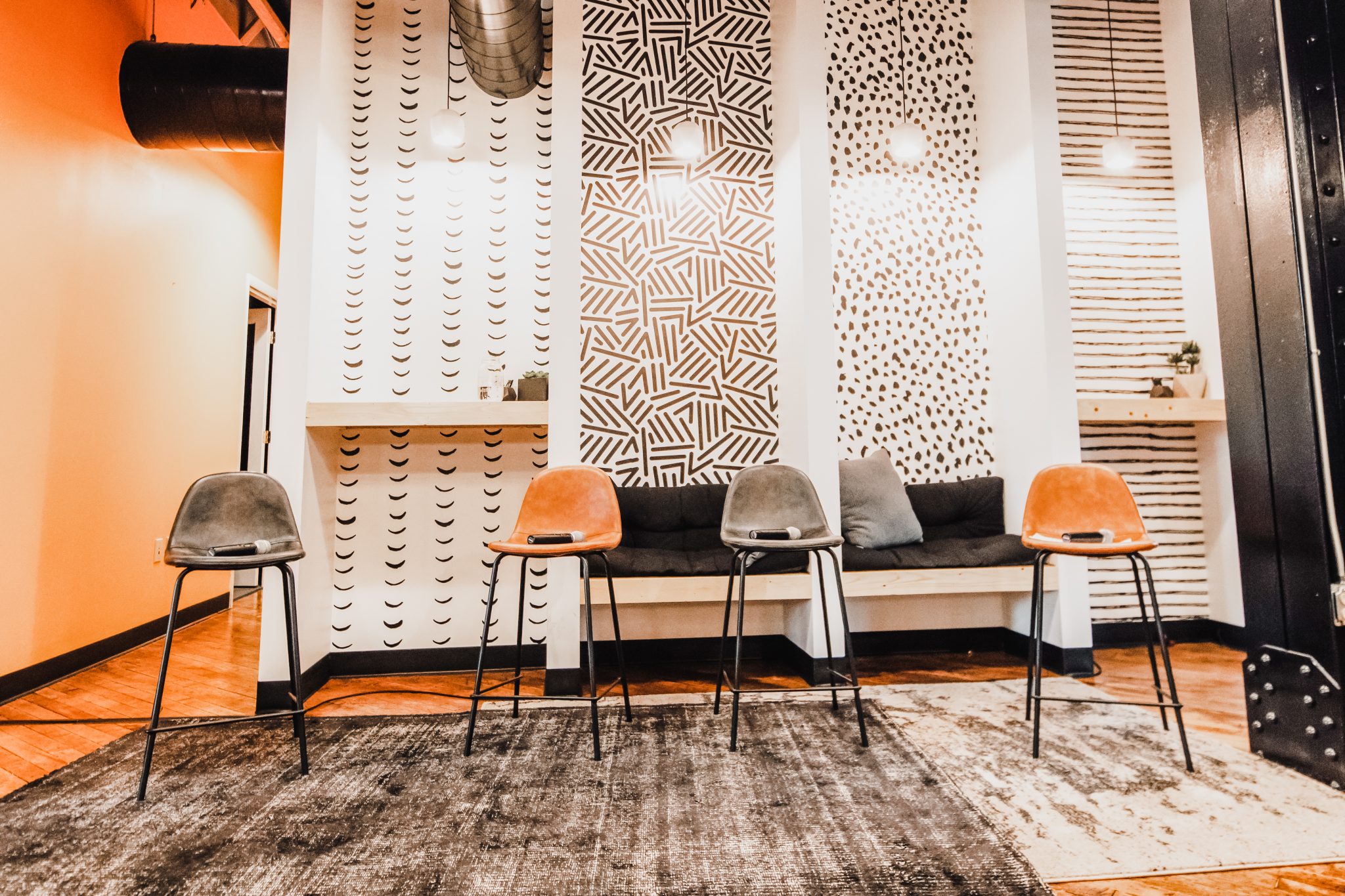As our company has grown over the past few years—we doubled our Cincinnati team and added more team members in Chicago and beyond—we’d outgrown our Cincinnati Longworth Hall space and needed some updates to how we functioned as a team. The space needed to accommodate us, give us a place we love to come to work and allow us to be as productive as possible. In an effort to continue to love our company, love our team, and love our space, we decided to put an organized effort into bettering the space we work in on a daily basis.
APPROACH:
We took our own medicine and leveraged our Lean Growth Playbook, especially leveraging Jobs to be Done, to develop empathy and team focused solutions.
In order to first understand our ‘audience’ – US – we asked the TGG Team to participate in a painstorm, either virtually via survey or in person. Uncovering hundreds of pain points for employees both in the Cincinnati office and remote, we set out to identify our core Jobs to Be Done. The whole company participated in scoring and prioritizing Jobs to understand where our attention should be placed when improving the space.
Once we understood the core Jobs to be Done, we sought inspiration – via our favorite Trends & Analogs approach. We toured neighboring offices in Longworth hall and spaces outside of Longworth to understand how other companies and spaces were solving some of the Jobs we needed to address. Then we took our inspiration and held an ideation session to identify the best TGG ways to solve for each Job. We identified potential budgets and pitched our plan to leadership, and got buy-in to move forward to improve the space.
IMPACT:
Our team came up with 240 pain points, in which we broke down into 110 Jobs to be Done. Here are few of the highest prioritized Jobs to be Done and how we transformed the space to solve for them:
I need an efficient way to conduct a meeting with virtual team members no matter what part of the space I’m in.
Our team invested in Zoom Rooms, which enabled us to have better video communication between offices. We added monitors to rooms, enabling people to video conference while also being on their computers.
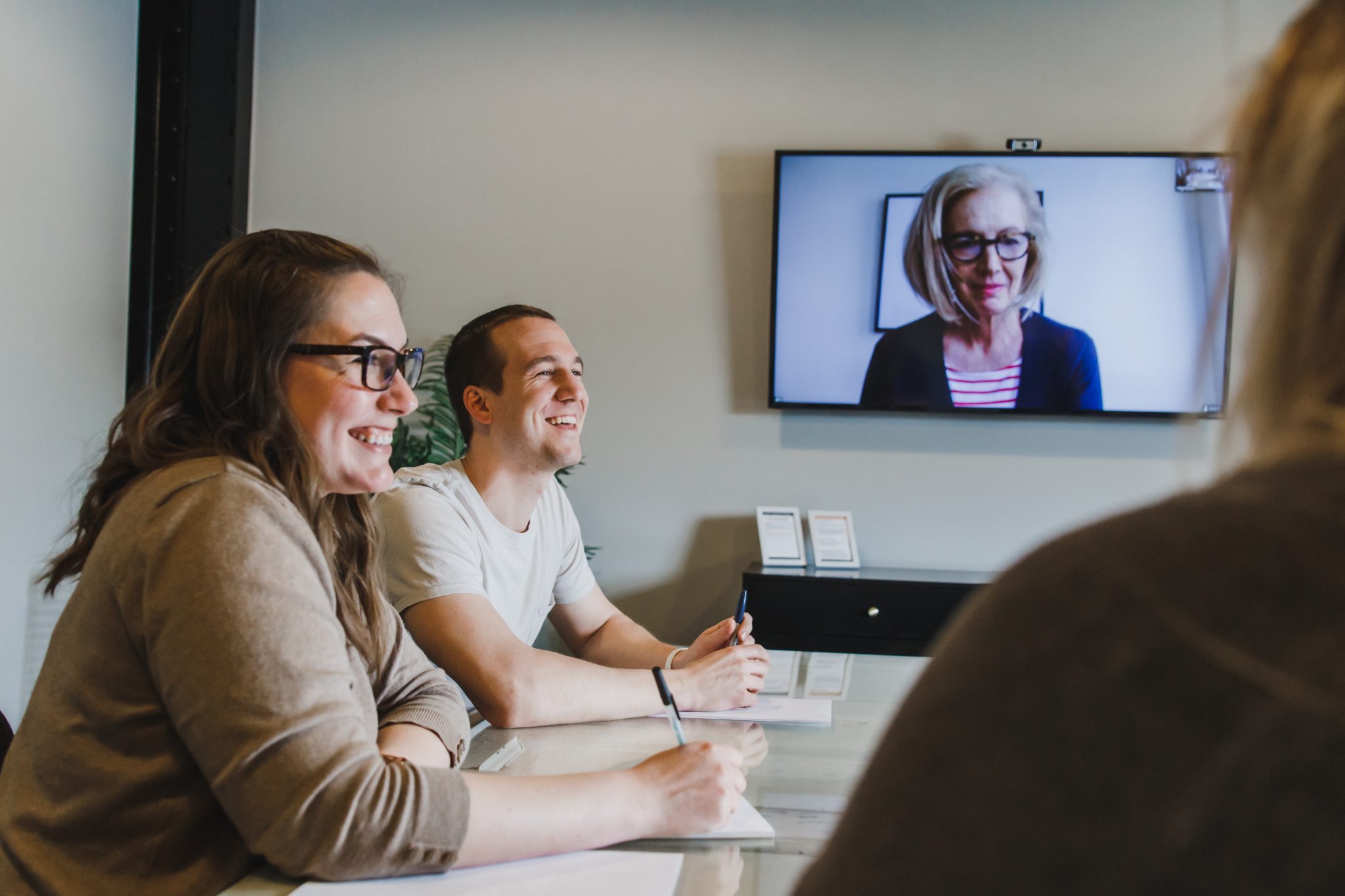
I need a space that makes it easy to collaborate with others.
Our previous configuration of the space made it difficult to sit in the open and collaborate frequently and easily with others. By knocking down walls and creating a more open environment for our team, collaboration happens more organically.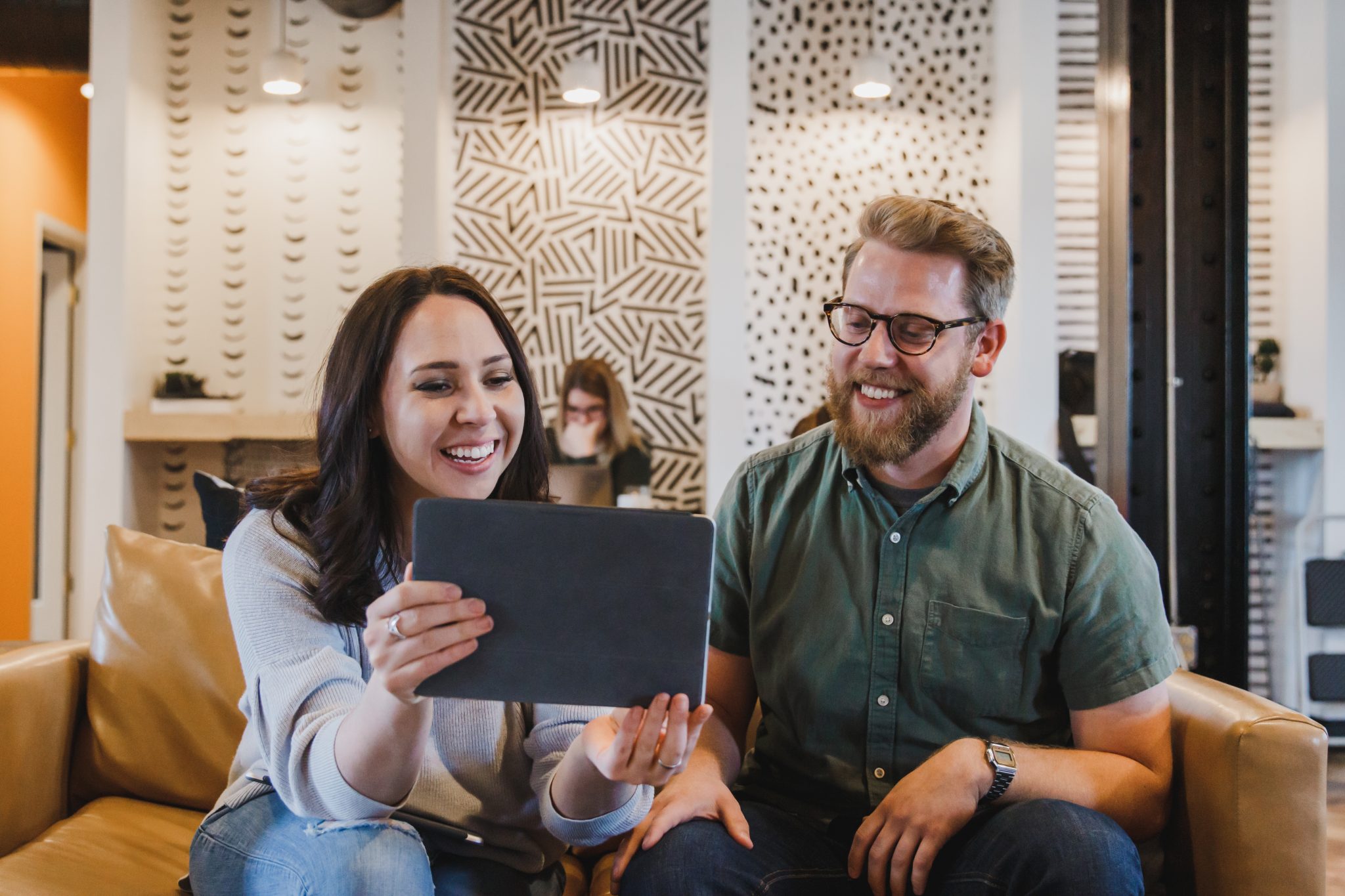

Give me a place to work when I need to focus without distraction.
Historically, when our team needed to focus, people would go into conference rooms. But as we grew, we really needed the conference rooms to be solely for calls and meetings. Upon doing research, we found why setups like rooms and cubicles enable more focus: shielding the peripheral from distractions. We built custom “nooks” so that people can have the feeling of being in a room or in a cubicle, but still be able to be part of the office and collaborate.
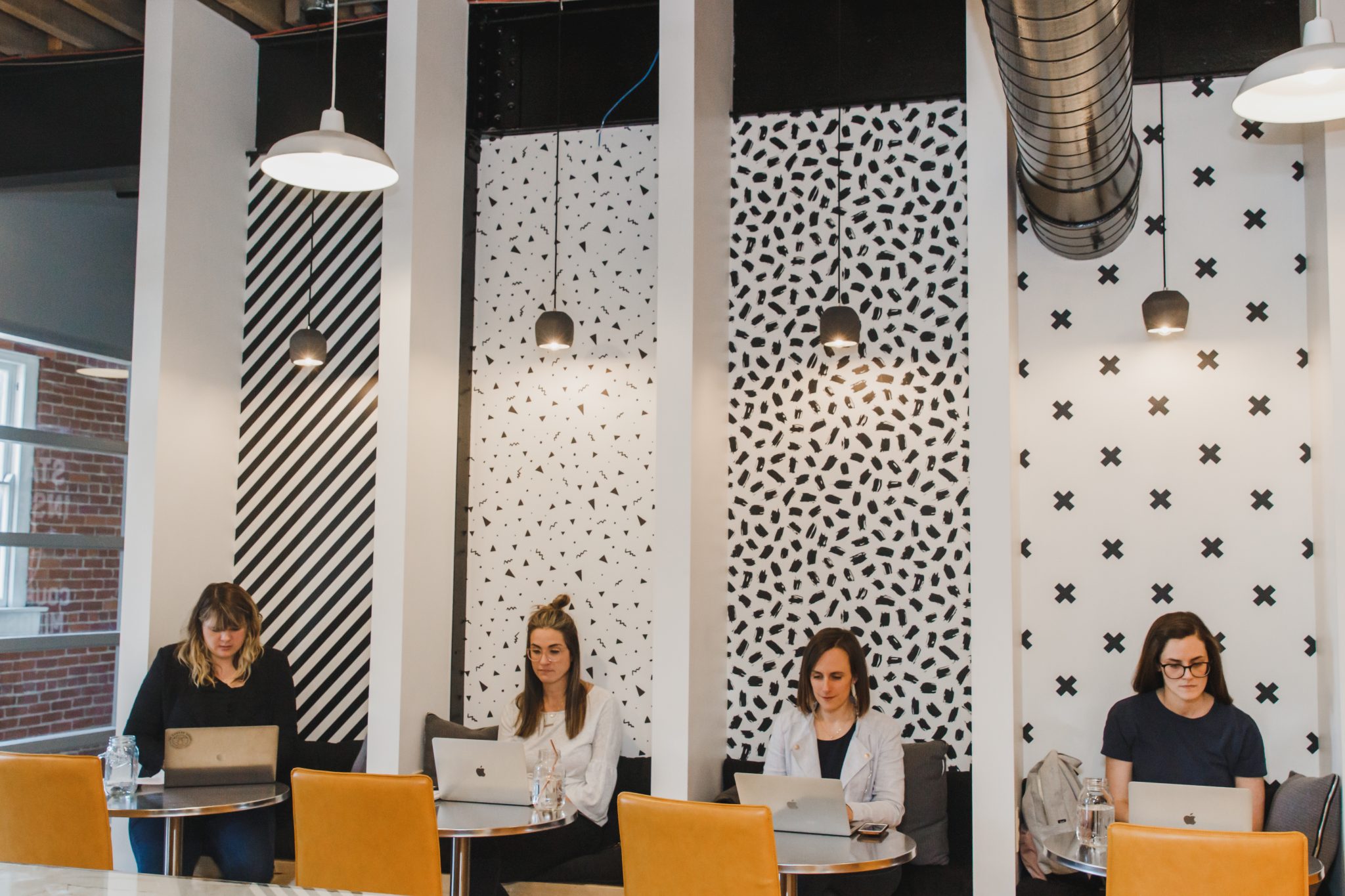
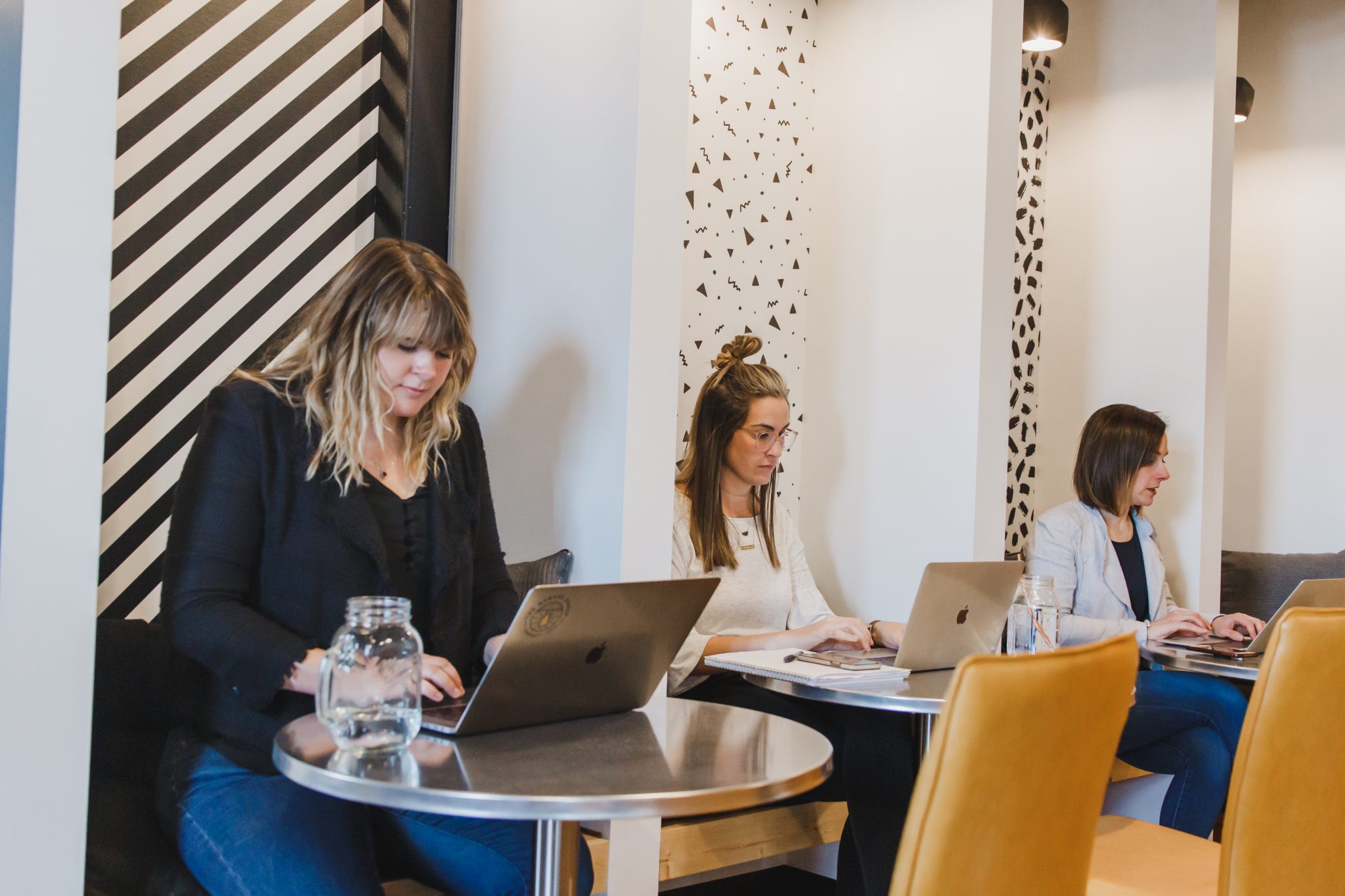
Give me a space where the entire on-site team can comfortably sit during all-team gatherings.
By knocking down the walls, we’ve not only enabled this, but we’ve also been able to start hosting Courageous Minds Only chats in our office for the first time.
